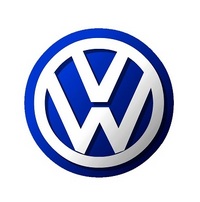2014 Volkswagen Preview Event
 |
By Thom Cannell
Senior Editor
Michigan Bureau
The Auto Channel
2013 is a great year for Volkswagen. Sales are up, even on models that were introduced a few years ago. The Beetle, Passat, Jetta were all reengineered for North American tastes and the switch from Euro-centric designs paid off. Their diesel sales continue capture 40% sales for Sportwagon, Passat, Jetta, and nearly that for Beetle and Touareg.
Next year, model year 2015 which starts in the third quarter of 2014, that's July to most of us, brings a new Golf 7, perhaps the Sirocco which has long been absent from the US, and likely an upgraded GTI as it's based on Golf. We drove those, a few notes follow. But at VW this year the news is all about their new four cylinder engine, the EA888.
 |
The motor features direct injection, as do most new engines. Directly injecting fuel into the combustion chamber allows fine tuning for power, torque, and most important, emissions reduction. The engine is turbocharged with the turbo very closely mated to the engine making throttle response extremely fast. The days of a long wait for power after pressing the accelerator are gone, long gone.
What makes the engine so very interesting to motor heads is that, using integrated software that combines CFD or computational flow dynamics with FEA or finite element analysis. The first models how fluids, air/fuel mixtures and exhaust gasses in this case, flow and bend. FEA permits analysis of how structures can be built to withstand different temperatures, thickness and strength requirements, and generally built with modern casting techniques.
Volkswagen has created an all-aluminum cylinder head that, in one piece, combines the intake manifold, exhaust manifold, and valve train. VW executives, at a recent event in California, said the casting would have been impossible without the integrated software that tied all competing factors together.
That's all well and geeky-good. But what is it like to drive those engines? In a several words, throttle response is instantaneous, noise is nearly absent except for a Teutonic requisite for some engine sound. With either manual or DSG transmissions, power is competitive in its segment. Compared to the outgoing 2.5-L, there is a bit more torque, 7 to be precise at 184 pound feet and identical 170 horsepower. That does not tell the story, however. The torque hits a flat peak at 1500 rpm, "a whopping 2750 revs less than the outgoing 2.5’s torque figure" to quote VW, and it stays flat up to 4750 rpm. That translates to a 0-60 time of 7.3 seconds versus 8.0 for the old motor.
The EA888 gets better fuel economy, according to VW's simulated EPA test cycle. It varies by model, but Jetta with 6-speed manual adds 5 mpg at EPA highway cycle speeds, now 36. City bumps up a mile per gallon with overall 29 compared to 26. Every gallon not purchased helps.
There's more to how the new engine packs more power into a 72 pound lighter package. The crankshaft uses fewer counterbalance weights, for instance, and the new motor features a turbocharger turbine made of higher temperature-resistant alloys (1796°F for you number guys), relocated oxygen sensor, billet compressor wheel, electronic wastegate, and that cast head that directs its exhaust gases through the water cooled manifold, shedding up to 160°F along the way. That means less wear and tear on the turbo, longer life. Oh, it also means better fuel economy.
We'll await a longer term test to validate the new engines, but an afternoon's driving most of the iterations that will be available convinced us that EA888 is the real deal. Powerful, quick, eager are descriptors that come to mind regardless of the model or transmission. More power, lower emissions, faster engine response, they're all things we like.
 |
 |
 |
 |
 |
 |


